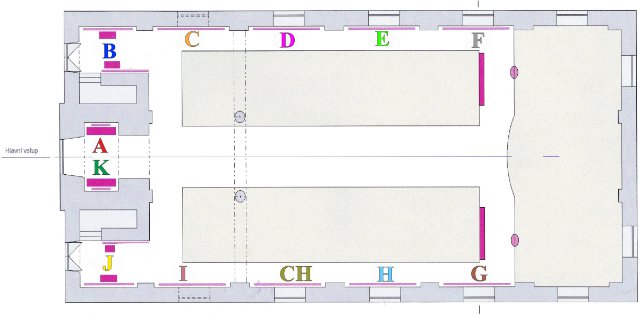Exhibition of the Czech Reformation in the European context
AThe Czech Reformation in European Context
The exhibition gives basic information about the development of Christianity on the European Continent and the important place of the Czech Reformation in this context. The term “Czech Reformation” is not a nationalistic designation but defines a specific type of the Reformation, in a similar way as we define the “German Reformation” (Lutheran, i.e. Augsburg Confession or A.C.) or “Swiss Reformation” (Calvinist, i.e. Helvetian Confession or H.C.).
Within the context of European history Waldensianism, the first Reformation movement, did not connect permanently with any state structure. The Hussite movement did pose a real threat to the monopoly of the medieval Church organization, but remained limited within the borders of only one state. The changes to the political and economic situation in the 16th century enabled the formation of independent territories, where the influence of Rome could not directly infringe upon them. However, all Reformation movements had only one thing common, even though each expressed it in different ways:
- The insistence that the Bible should be accessible to everybody in intelligible language; and
- The priority of a direct, personal, immediate relationship with God and therefore the rejection of any mediation through the Church institution (that's why all of them disavowed the papacy).
The exhibition also seeks to point out similar experience of the followers of certain Reformation movements who rediscovered, amidst many sorrows, that genuine Christianity not burdened with the requirements of Church institutions.
1. The traces and context of Reformation in Europe since 13th till 16th century

Map symbols:
- blue arrows = Waldensian Reformation (shining candle as symbol);
- red arrows = Czech Reformation (Bible and chalice as symbol);
- green discontinuous arrow = John Wycliff's influence (no special symbol, only Wycliff's face);
- grey star = Lutheran (German) Reformation ("Luther's Rose" as symbol);
- orange star = Calvinist (Swiss) Reformation (Huguenots' Cross with Holy Spirit dove as symbol)
2. The gradual origin of the Evangelic Toleration Area in Velká Lhota:
Velká Lhota —
Evangelic Toleration Area
- 1782 the Tolerance House of Prayer (A.C., later common), 1782 the parsonage A.C.,
- 1788 the parsonage H.C.,
- 1873 the church H.C.,
- 1876 the reconstruction of the House of Prayer to the church A.C.,
- 1918 all united in the Evangelic Church of Czech Brethren,
- 1992 the complex becomes state protected monument

3. The plan of the exhibition

- AThe Czech Reformation in European Context
- BThe Development Context of Czech Reformation
- CHuss and Hussites (1st half of 15th century)
- DLand of Both Folk (2nd half of 15th century)
- EConscience Freedom Fight (16th century, 1st half of 17th century)
- FIn Exile and during Persecution (1650–1781)
- GToleration Churches (1781–1861)
- HSince Equality to Unity [1861–1918 (1939)]
- CHIn the Epoch of Temptation (1939–1968)
- IChurches that Claim Their Allegiance to the Czech Reformation in the Czech Republic
- JProtestant Museums in Europe
- KWhat Was Velká Lhota